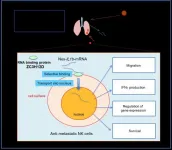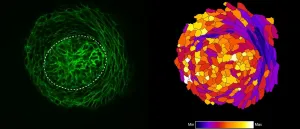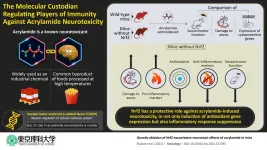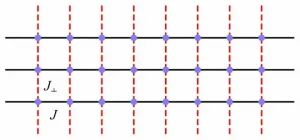Microscopy deep learning predicts viral infections
2021-06-21
(Press-News.org) In humans, adenoviruses can infect the cells of the respiratory tract, while herpes viruses can infect those of the skin and nervous system. In most cases, this does not lead to the production of new virus particles, as the viruses are suppressed by the immune system. However, adenoviruses and herpes viruses can cause persistent infections that the immune system is unable to completely suppress and that produce viral particles for years. These same viruses can also cause sudden, violent infections where affected cells release large amounts of viruses, such that the infection spreads rapidly. This can lead to serious acute diseases of the lungs or nervous system.
Automatic detection of virus-infected cells
The research group of Urs Greber, Professor at the Department of Molecular Life Sciences at the University of Zurich (UZH), has now shown for the first time that a machine-learning algorithm can recognize the cells infected with herpes or adenoviruses based solely on the fluorescence of the cell nucleus. "Our method not only reliably identifies virus-infected cells, but also accurately detects virulent infections in advance," Greber says. The study authors believe that their development has many applications - including predicting how human cells react to other viruses or microorganisms. "The method opens up new ways to better understand infections and to discover new active agents against pathogens such as viruses or bacteria," Greber adds.
The analysis method is based on combining fluorescence microscopy in living cells with deep-learning processes. The herpes and adenoviruses formed inside an infected cell change the organization of the nucleus, and these changes can be observed under a microscope. The group developed a deep-learning algorithm - an artificial neural network - to automatically detect these changes. The network is trained with a large set of microscopy images through which it learns to identify patterns that are characteristic of infected or uninfected cells. "After training and validation are complete, the neural network automatically detects virus-infected cells," explains Greber.
Reliably predicting severe acute infections
The research team has also demonstrated that the algorithm is capable of identifying acute and severe infections with 95 percent accuracy and up to 24 hours in advance. Images of living cells from lytic infections, in which the virus particles multiply rapidly and the cells dissolve, as well as images of persistent infections, in which viruses are produced continuously but only in small quantities, served as training material. Despite the great precision of the method, it is not yet clear which features of infected cell nuclei are recognized by the artificial neural network to distinguish the two phases of infection. However, even without this knowledge, the researchers are now able to study the biology of infected cells in greater detail.
The group has already discovered some differences: The internal pressure of the nucleus is greater during virulent infections than during persistent phases. Furthermore, in a cell with lytic infection, viral proteins accumulate more rapidly in the nucleus. "We suspect that distinct cellular processes determine whether or not a cell disintegrates after it is infected. We can now investigate these and other questions," says Greber.
INFORMATION:
[Attachments] See images for this press release:

ELSE PRESS RELEASES FROM THIS DATE:
2021-06-21
The authors of new research say supporting children and young people's mental health is as important as supporting their academic progress, and that particular attention should be paid to the fact that some young people have struggled more than others.
Findings from their study, published in the Journal of Affective Disorders, focused on the connections between loneliness, social contact, parental relationships, and the mental health of adolescents aged 11-16 during the first full UK lockdown from March to May 2020.
Their analysis drew on self-reported data from 894 young people who each completed a survey throughout to gauge their experiences of lockdown and its effects on their emotions, relationships, and feelings.
The team from the universities of Bath, Bristol, ...
2021-06-21
Hypoxia, or the inadequate oxygenation of a tissue, is a condition occurring frequently in all solid tumours such as melanoma skin cancer. Melanoma cells are not only able to survive oxygen deprivation, but also to use it to their own advantage by hijacking the anti-tumour immune response and developing resistance mechanisms to conventional anti-cancer therapies. A key gene responsible for cancer cell adaptation to hypoxia is HIF-1α (Hypoxia Inducible Factor-1 alpha). Led by Dr Bassam Janji, head of the Tumor Immunotherapy and Microenvironment (TIME) research group at the Luxembourg Institute ...
2021-06-21
A research group led by Professor Sachie Hiratsuka, Institute for Biomedical Research, Shinshu University, has found that a specific sequence of messenger RNA (mRNA), which exists outside cells, binds to receptors on the surface of natural killer (NK) cells and is taken up into the nucleus. The group found that NK cells with mRNA uptake are able to enhance their migration activity and interferon gamma production. Furthermore, NK cells incorporating the mRNA showed an inhibitory effect on cancer metastasis in animal experiments.
In recent years, the results of cancer treatment have been improving with the increase of medical ...
2021-06-21
Helsinki University research group used live tissue imaging for the first time to visualise the emergence of the mammary gland.
Despite long-standing interest, the cellular mechanisms driving the initiation of mammary gland development have remained elusive for decades, mostly due to technical limitations in studying dynamic cell behaviors in live tissues. Recent advances in microscopic methods and availability of various mouse models allowed the research group of Marja Mikkola from HiLIFE Institute of Biotechnology, University of Helsinki to address this question. This is the first time when live tissue imaging has been used to visualise the emergence of the mammary gland.
Mammary gland is the class-defining organ of mammals, yet we know surprisingly little how its ...
2021-06-21
Acrylamide is a toxic chemical compound that affects the nervous system. Not only is it widely used in industries such as paper production, plastics, and wastewater management, but it is also a byproduct of commonly used food processing methods, which makes human exposure to acrylamide inevitable. Therefore, many studies have focused on understanding the toxic effects of acrylamide and our body's response to them. Generally, in response to toxicity, the body's cells release protective factors and antioxidants to remedy the damage. This response is activated by various cellular machinery. One such activator is a protein called "nuclear factor erythroid 2-related factor 2" (Nrf2), ...
2021-06-21
Special diets, exercise programs, supplements and vitamins, there is everywhere something supposed to help us live longer. Whether it actually works has not always been shown, but the average life expectancy of people has increased over the last 150 years. A study by an international team of researchers, including Claudia Fichtel and Peter Kappeler, scientists in the Behavioral Ecology and Sociobiology Unit at the German Primate Center (DPZ) - Leibniz Institute for Primate Research in Göttingen, indicates that we probably cannot slow down aging. The comparative studies with humans and non-human primates, indicates that it is not the rate at which humans age that slows ...
2021-06-21
Washington, DC, June 21, 2021 - Depression in youth, between the ages of 10 and 24 years, is both a leading cause of stress and a possible risk factor for future diseases and impairment. Now, a study in the Journal of the American Academy of Child and Adolescent Psychiatry (JAACAP), published by Elsevier, confirms that depression in childhood or adolescence is associated with higher levels of adult anxiety and substance use disorders, worse health and social functioning, less financial and educational achievement, and increased criminality.
The findings are based on the Great Smoky Mountains Study, an ongoing longitudinal ...
2021-06-21
TEL AVIV, Israel and RALEIGH, NC, June 21, 2021, RedHill Biopharma Ltd. (Nasdaq: RDHL) ("RedHill" or the "Company"), a specialty biopharmaceutical company, today announced presentation of the positive Phase 2 safety and efficacy data for oral opaganib (Yeliva®, ABC294640) in hospitalized patients with COVID-19 pneumonia at the World Microbe Forum (WMF) 2021 (poster #: 5574).
Results and post hoc analyses of data from the 40-patient U.S. Phase 2 study were presented in a poster entitled, "Opaganib, an Oral Sphingosine Kinase-2 (SK2) Inhibitor in COVID-19 Pneumonia: A Randomized, Double-blind, Placebo-controlled Phase 2A Study, in ...
2021-06-21
In 2013, François ENGLERT and Peter HIGGS won the Nobel Prize in Physics for the theoretical discovery of a mechanism that contributes to our understanding of the origin of mass of subatomic particles, which was confirmed through the discovery of the predicted fundamental particle by the A Toroidal LHC Apparatus (ATLAS) and the Compact Muon Solenoid (CMS) experiments at The European Organization for Nuclear Research (CERN)'s Large Hadron Collider in 2012. The Higgs mode or the Anderson-Higgs mechanism (named after another Nobel Laureate Philip W ANDERSON), has widespread influence ...
2021-06-21
A Curtin University-led study of ancient bones on South Australia's Kangaroo Island has provided new information about the Island's past fauna and an insight into how species may live there in the future.
Published in Quaternary Science Reviews, the researchers analysed around 2,000 bone fragments with the aim of eventually being able to establish a more complete picture of past biodiversity on the Island.
Lead researcher Dr Frederik Seersholm from Curtin's School of Molecular and Life Sciences said DNA studies on such a large scale have never been done on the Island before.
"We identified 33 species, 10 of which are extinct on the island today. We also found DNA traces from both the ...
LAST 30 PRESS RELEASES:
[Press-News.org] Microscopy deep learning predicts viral infections







